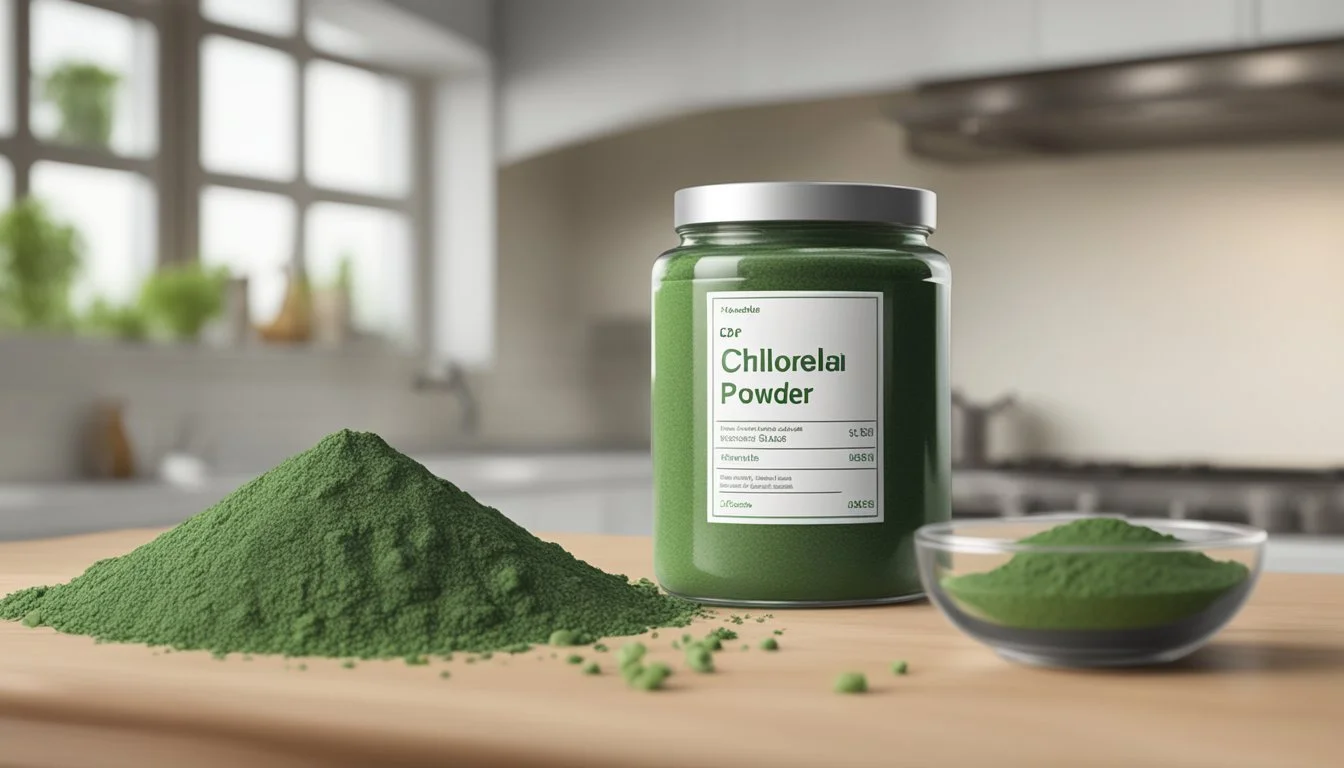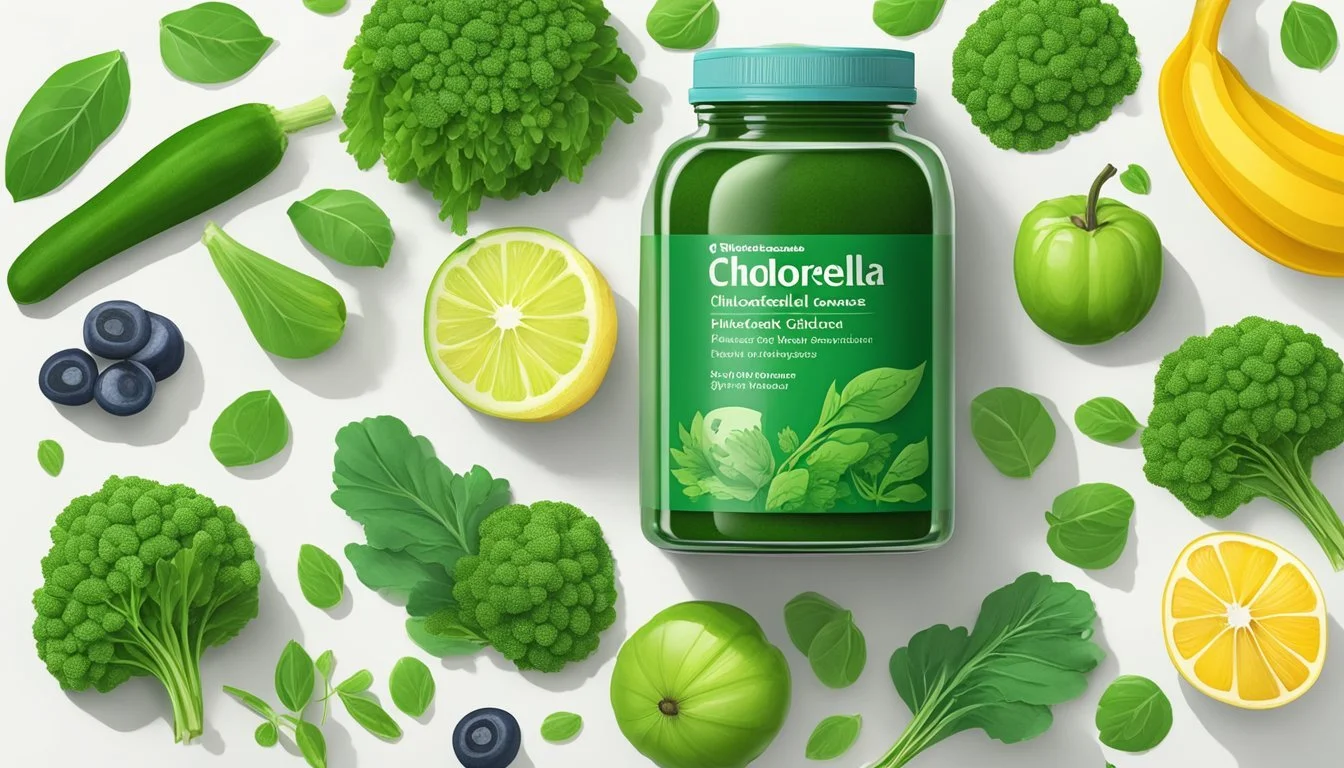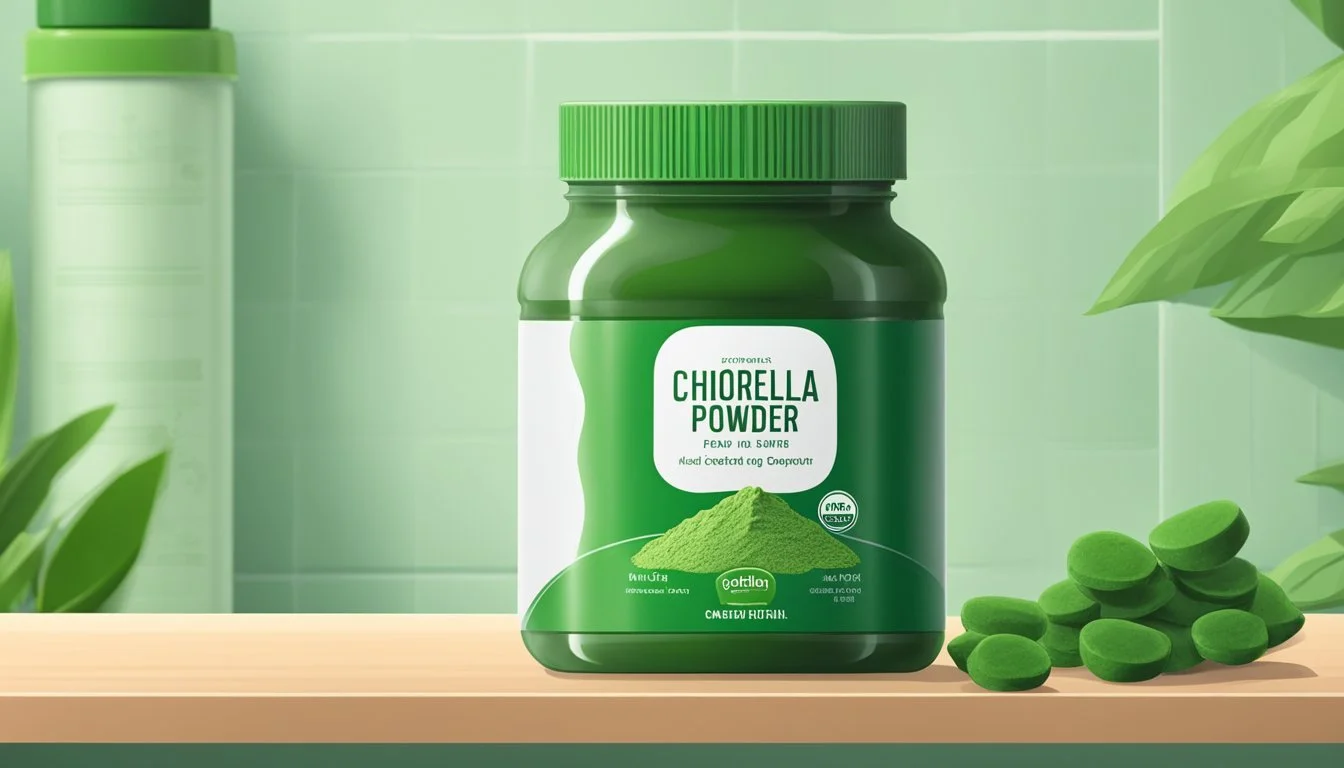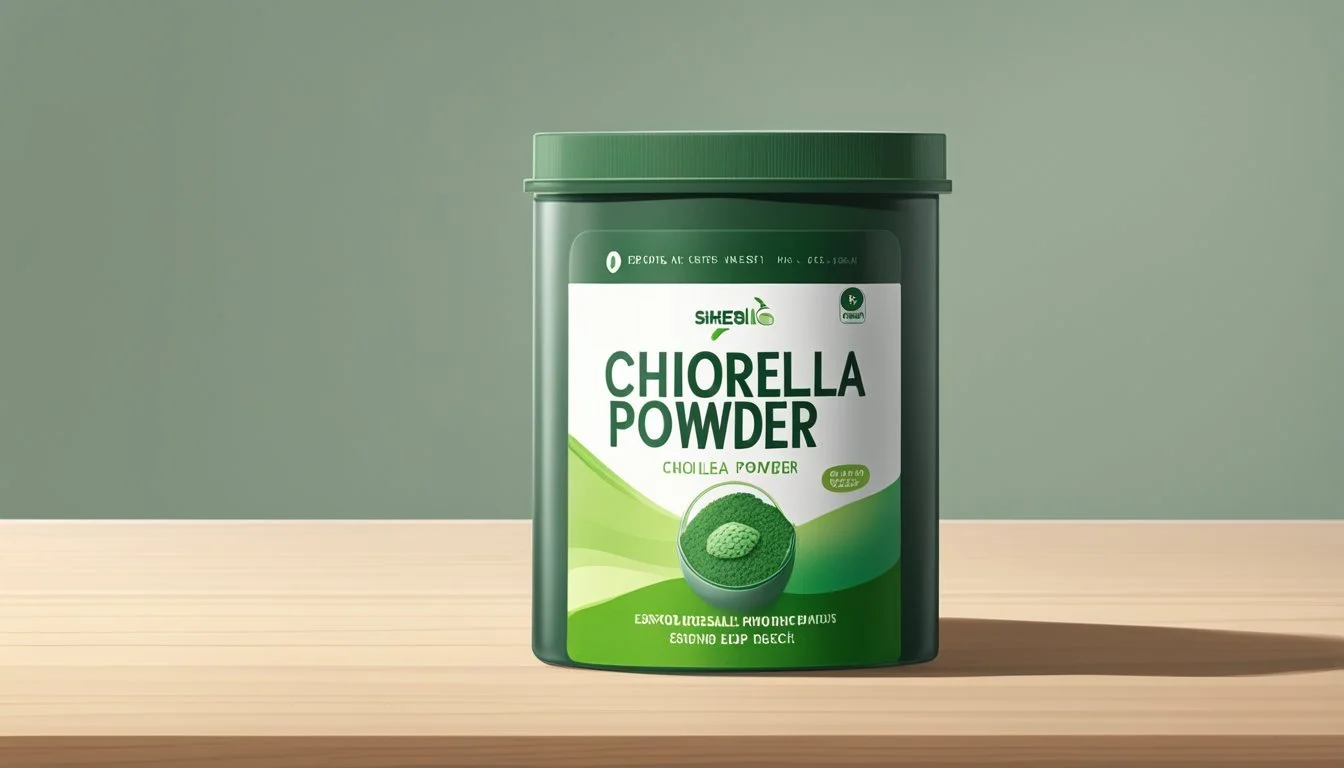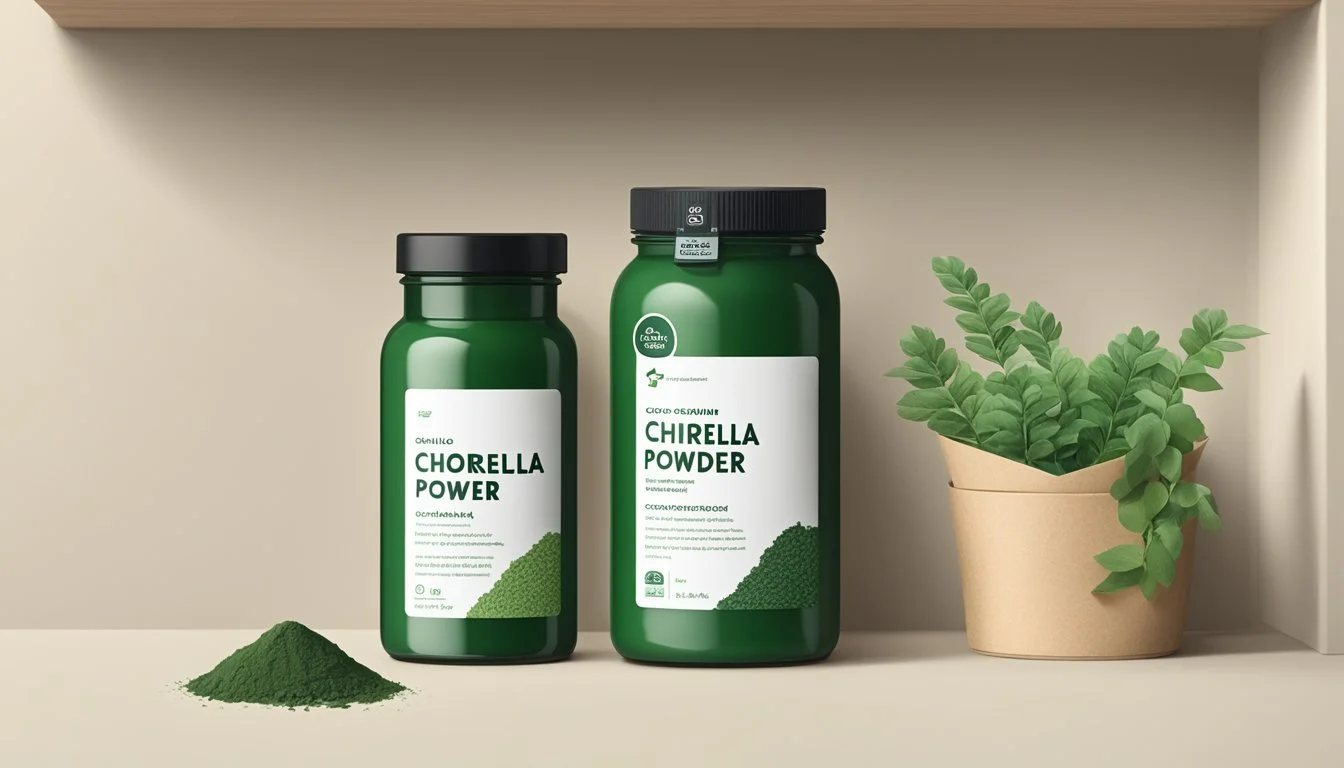Does Chlorella Powder Go Bad?
Understanding Shelf Life and Storage Tips
Chlorella powder is recognized as a superfood due to its nutrient-dense profile, which includes a high concentration of vitamins, minerals, and antioxidants. Originating from a species of green microalgae, chlorella provides a plethora of health benefits, which has garnered attention in the health community for its potential in supporting bodily systems and well-being.
The shelf life of chlorella powder is a common concern for consumers. Under optimal storage conditions, this green powder can maintain its quality for an extended period. Ensuring the powder is stored in a cool, dry place away from light can significantly impact its longevity. When sealed to prevent the entry of oxygen and moisture, the efficacy and safety of chlorella powder can be sustained for years.
While the natural composition of microalgae lends itself to stability, the process by which chlorella is dried and packaged also plays a critical role in determining its expiration. Spray drying, a method that removes moisture effectively, coupled with hermetic sealing, may extend the usable life of chlorella powder substantially, sometimes up to a decade. However, once opened, it is important to handle the product with care to preserve its quality and avoid spoilage.
Understanding Chlorella
Chlorella is a highly nutritious algae that has garnered attention for its health benefits. This section explores its nature, comparison with spirulina, and its rich nutrient content.
What Is Chlorella?
Chlorella is a genus of single-celled green algae that grow in freshwater. It is known for its high chlorophyll content, which gives it a deep green color. Due to its dense nutrient composition, chlorella is often dried and processed into powder or tablet form for dietary supplements.
Chlorella Vs. Spirulina
Chlorella and spirulina are both forms of algae with high nutritional value, but they have distinct differences:
Chlorella is a green algae, whereas spirulina is a blue-green algae.
Cell Structure: Chlorella has a tough cell wall that is usually broken during processing to improve digestibility; spirulina has a softer, easily digestible cell wall.
Nutrient Variation: While both contain a wealth of vitamins, minerals, and proteins, chlorella is higher in omega-3 fatty acids and chlorophyll, whereas spirulina contains more protein and iron.
Nutritional Profile
Chlorella's nutritional profile is comprehensive, making it a potent source of several nutrients:
Nutrient Benefit Protein Contains all essential amino acids, making it a complete protein. Vitamins Rich in B vitamins, vitamin A, and vitamin C. Minerals Good levels of magnesium, iron, zinc, and phosphorus. Omega-3 Fatty Acids Beneficial for heart health. Antioxidants Includes beta-carotene and lutein, which help protect cells from damage. Fiber Aids in digestion and promotes a feeling of fullness.
Chlorella is often consumed to support detoxification, immune health, and overall well-being, primarily because of its antioxidants and chlorophyll content, which are known for their cleansing properties.
Health Benefits of Chlorella
Chlorella is recognized for its nutritional density and potential to support various facets of human health, from fortification of the immune system to cardiovascular benefits.
Immune System Support
Chlorella possesses a rich supply of antioxidants and vitamins that contribute to the reinforcement of the immune system. Studies have shown that the algae may enhance the production of antibodies in the body, which play a crucial role in fighting pathogens and infections.
Vitamins: Contains Vitamin B12, Vitamin C, and Vitamin E.
Antioxidants: Rich in beta-carotene and lutein.
Detoxification Properties
The detoxifying effect of chlorella is attributed to its high chlorophyll content, which aids in binding and removing heavy metals and other harmful compounds from the body.
Chlorophyll: Facilitates the elimination of toxins from the bloodstream.
Fiber: Assists in promoting digestive health and regularity, further supporting detoxification.
Cardiovascular Health
Chlorella contributes to cardiovascular well-being by maintaining healthy cholesterol levels and promoting good blood pressure. It contains nutrients that are essential for heart health.
Omega-3 fatty acids: Support the reduction of blood pressure.
Fiber and Niacin: Have been linked to lower cholesterol levels.
Digestive Health
Its fiber content not only assists in detoxification but also enhances digestive efficiency, preventing constipation and promoting a healthy gut flora balance.
Dietary Fiber: Helps in maintaining digestive tract function.
Proteins and Minerals: Aid in tissue repair and maintenance of digestive health.
Skin Improvement
Chlorella's assortment of vitamins and minerals, along with its detoxifying properties, can result in clearer and more resilient skin.
Vitamin A: Important for skin maintenance and repair.
Antioxidant Properties: Protect against ultraviolet radiation.
Safety and Side Effects
When considering the consumption of chlorella powder, it's essential to address both its safety profile and the potential for side effects. Individuals may react differently, and while side effects are typically mild, there are specific considerations for allergies, medication interactions, and certain life stages, such as pregnancy and breastfeeding.
Potential Side Effects
Chlorella is generally considered safe for most people when consumed in recommended quantities. However, some common side effects reported by individuals include:
Diarrhea
Nausea
Gas
Green-colored stools
Stomach cramping
Less commonly, chlorella may contain heavy metals such as lead, although reputable sources ensure minimal levels. High amounts of heavy metals can be harmful, therefore, sourcing chlorella from reputable distributors is crucial.
Allergies and Sensitivities
Chlorella can trigger allergic reactions in some people, especially in those with a sensitivity to iodine or those who are allergic to molds. Allergic responses may include symptoms such as:
Skin rashes
Swelling
Breathing difficulties
Interactions with Medications
Individuals taking blood thinners like warfarin should exercise caution as chlorella can affect blood clotting. Consultation with a healthcare provider is advisable to avoid interactions with medications that could impact the immune system or blood coagulation.
Considerations for Pregnancy and Breastfeeding
The safety of chlorella during pregnancy and breastfeeding is not fully established. Due to the lack of conclusive evidence, those who are pregnant or breastfeeding should consult a healthcare professional before adding chlorella to their diets to prevent any potential risks to the mother or child.
Usage Tips
Incorporating chlorella into one's diet effectively and understanding the appropriate dosage and forms are crucial for maximizing the benefits of this dietary supplement.
Incorporating Chlorella into Your Diet
Chlorella is a versatile supplement that can be added to one's daily food intake in various ways. It often comes in powder, tablet, or capsule form, enabling flexibility in how it can be consumed.
Smoothies: A popular method is by blending chlorella powder into smoothies. For a taste that's more palatable, combining the powder with strong-flavored ingredients like bananas or berries can mask its earthy taste.
Example Smoothie Recipe: - 1 ripe banana - 1/2 cup mixed berries - 1 teaspoon chlorella powder - 1 cup almond milk or water - Honey or a sweetener of choice, to taste Blend all ingredients until smooth.Tablets and Capsules: For those who are on-the-go or prefer a quick and direct method, consuming chlorella in tablet or capsule form is simple and efficient. They can be taken with water, just like any other dietary supplement.
Optimal Dosage and Form
Determining the right dosage of chlorella depends on several factors, including age, health status, and the specific benefits one is hoping to achieve. A general recommended dose for adults is typically between 3 to 6 grams per day.
Tablets: They usually come in 200mg or 500mg options, and the number of tablets should match the total desired daily dosage.
Powder: Often available in pre-measured sachets or loose powder that allows for adjustable serving sizes depending on individual needs.
Capsules: Capsule forms are convenient and mask the taste, suitable for those who may not enjoy the flavor of chlorella.
When beginning to use chlorella, it's advisable to start with a lower dose and gradually increase to the desired amount. This helps to reduce the likelihood of digestive side effects and allows the body to adjust to the supplement. Always consult with a healthcare provider before starting any new dietary supplement regimen, especially for children or those with pre-existing health conditions.
Storage and Shelf Life
Chlorella powder, a nutrient-dense supplement, can maintain its quality for a significant period when stored correctly. Moisture, packaging, and light exposure are critical factors in preserving this green superfood. Understanding how to store chlorella powder, recognize when it has gone bad, and know its shelf life and expiration can help maximize its benefits.
Proper Storage Practices
To preserve the integrity of chlorella powder, it should be stored in a cool, dry place, away from direct sunlight. Packaging plays a vital role; an airtight container is recommended to prevent the absorption of moisture, which can lead to spoilage. Refrigerating chlorella powder can extend its shelf life, ensuring that its nutritional profile remains intact.
Container: Airtight, opaque container
Location: Cool, dry place
Temperature: Preferably into a refrigerator
Identifying Spoilage
Chlorella powder that has been compromised typically exhibits notable changes. A distinctive off smell, discolored appearance, or any signs of moisture should serve as clear indicators that the powder may not be suitable for consumption and should be discarded.
Smell: Should remain neutral, absence of rancidity
Color: Consistent green; any color changes could suggest spoilage
Texture: Uniform powder, clumping may suggest moisture exposure
Shelf Life and Expiration
While the FDA mandates a standard expiration date of three years for packaged food products, chlorella powder can often exceed this period if stored under optimal conditions. It's imperative to adhere to the expiration date provided by the manufacturer, but also to assess the product's quality as it nears the end of the suggested shelf life.
FDA Guidelines: Maximum of three years for packaged foods
Manufacturer's Expiration Date: Follow the date on the packaging
Quality Assessment: Regular checks, especially as it approaches the end of the shelf life
Regulatory Standards and Quality
Regulatory bodies set stringent standards to safeguard consumers against contaminants in food products. Quality control measures are imperative to ensure the safety and purity of dietary supplements like chlorella powder.
FDA Oversight
The Food and Drug Administration (FDA) plays a critical role in the regulation of food products, including dietary supplements like chlorella powder. The FDA sets guidelines for product labeling, which include expiration dates to inform consumers of the product’s expected shelf life. While the FDA mandates a maximum expiration date of three years for packaged food products, manufacturers must also comply with Current Good Manufacturing Practices (CGMPs). These practices are designed to ensure the safety and quality of the production process. Additionally, the FDA periodically inspects facilities to verify compliance and has the authority to take action against companies that fail to meet regulatory standards.
Contaminants and Quality Control
The quality of chlorella powder is critical to its safety and efficacy. Manufacturers must monitor for potential contamination by toxins, heavy metals, or other harmful substances. Regular testing is crucial in the detection of:
Toxins: Natural or chemical elements that might impede chlorella's health effects.
Heavy Metals: Elements like lead, mercury, cadmium, and arsenic, which can accumulate in the body and pose health risks.
The production process includes steps such as cultivation in controlled environments and spray-drying to eliminate moisture - a primary cause of food degradation. Through these measures, producers aim to deliver high-quality chlorella that meets or exceeds industry safety standards.
Environmental and Ethical Considerations
When considering the production of chlorella powder, it's important to assess the sustainability of its production practices and the ethical principles behind sourcing. These factors carry significant weight in evaluating the overall footprint of this dietary supplement.
Sustainable Production
Chlorella production necessitates a controlled environment to ensure high-quality yield. Taiwan is recognized for its advanced chlorella cultivation, adhering to stringent sustainability standards. This includes the use of closed cultivation systems that minimize the risk of contamination and environmental disruption. These systems also allow for the efficient use of resources by recycling water and nutrients necessary for algal growth.
The production process also typically involves spray-drying, a method that effectively removes moisture and ensures stability, thus extending the shelf life of chlorella powder. By enhancing shelf life, the need for frequent production cycles is reduced, which in turn decreases the environmental burden.
Determining Ethical Sources
Ethical sourcing of chlorella focuses on transparency, fair labor practices, and responsible environmental stewardship. While choosing chlorella suppliers, it is prudent to consider whether the company:
Adheres to Fair Labor Practices: Ensuring that workers are treated fairly and work in safe conditions.
Employs Eco-friendly Practices: Utilizing renewable energy sources and reducing waste during production.
Offers Transparency: Providing clear information about where and how the chlorella is produced.
Taiwan's prominence in chlorella cultivation comes with adherence to regulatory standards including environmental management and labor laws. Consumers can look for certifications such as organic or sustainability labels, which are indicative of ethical production methods. These certifications often imply that a third-party organization has evaluated the production process to ensure it meets certain ethical and environmental criteria.

